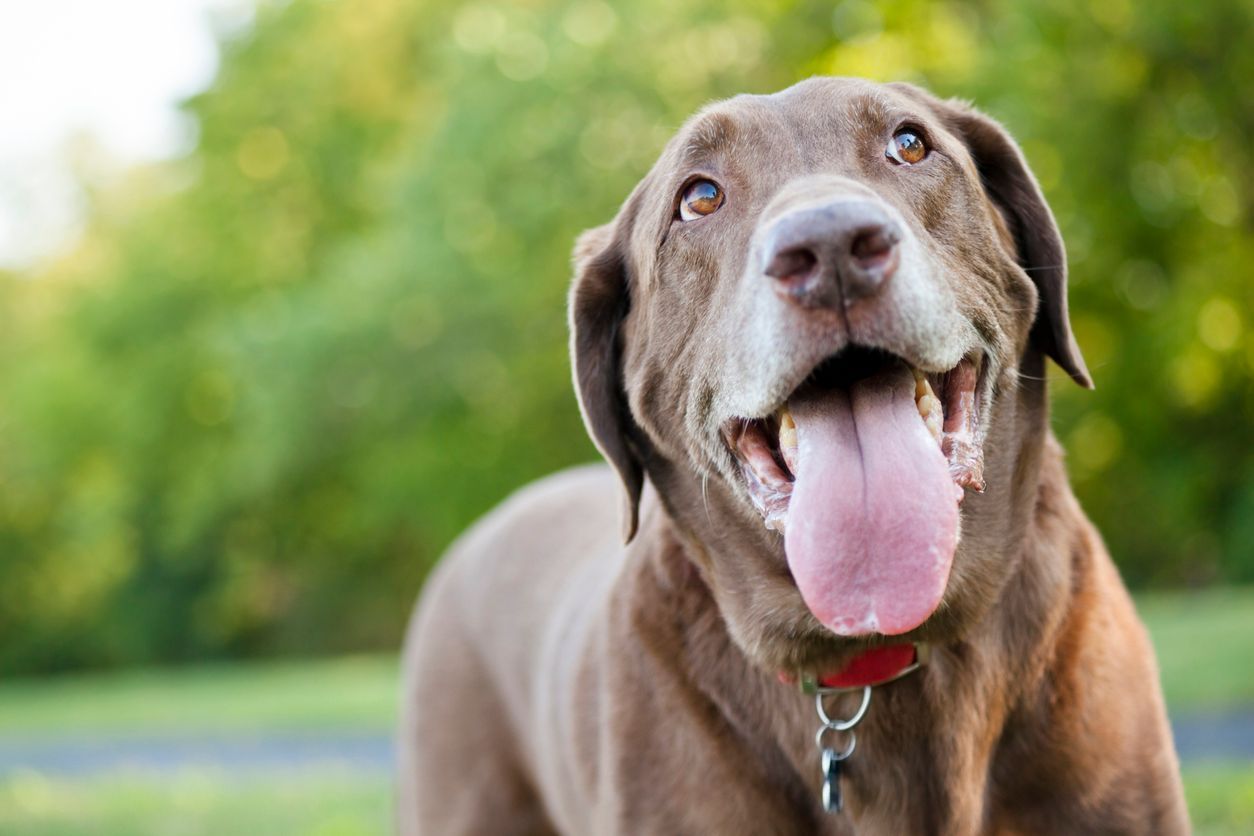How do I know if my dog has an oral tumor?

Oral tumors are relatively common in dogs but can be difficult to spot for pet parents due to few presenting symptoms. It is important to keep a close eye on your dog’s oral health, as some oral masses can be malignant or highly aggressive. Read on if you’ve ever wondered:
- How do I know if my dog has an oral tumor?
- How can I tell if my dog’s tumor is benign or cancerous?
- How do veterinarians diagnose and treat oral tumors in dogs?
- Can I prevent my dog from getting an oral tumor?
Common tumors found in other parts of the body, such as squamous cell carcinoma, can also grow in a dog’s mouth. Early identification is essential for successful treatment of oral cancer in dogs. Surgical excision is often recommended for both benign and cancerous tumors. In some cases, radiation therapy can help prevent the spread of oral cancer to other parts of the body.
What do oral tumors look like in dogs?
Oral tumors can be benign or malignant, and their appearance can differ greatly from tumor to tumor. Other oral growths such as abscesses, some dental issues, or even a piece of a stick or toy can be mistaken for tumors. The only sure way to identify any kind of mass, lump, tumor, or growth is to see a veterinarian. Biopsy is usually necessary for an accurate diagnosis.
Benign oral tumors
Epulis tumors are some of the most common oral tumors in dogs. While epulis tumors are benign, they can spread extensively, invading nearby tissue and bone. Even though they are usually not cancerous, epulis tumors can cause major problems in your dog’s mouth if left untreated. Appearance alone is not enough to diagnose an oral mass. The only way to know for sure if a tumor is benign is to have it examined by a veterinarian. A biopsy is also usually necessary. The most common benign tumors seen in dogs’ mouths include:
Peripheral odontogenic fibroma
Peripheral odontogenic fibromas are a type of epulis tumor and the most common benign oral tumor diagnosed in dogs. They may be categorized as ossifying, which means they become boney, or fibromatous, meaning they consist of mainly fibrous tissue, and they usually appear as a hard, smooth, pink mass adjacent to the teeth. They often look like enlarged gum tissue and may be attached to the inside of your dog’s mouth by a thin stalk of flesh.
Acanthomatous ameloblastoma
Acanthomatous ameloblastoma is a highly aggressive tumor despite being a benign epulis. The mass often has a cauliflower-like, ulcerated surface. Like other epulides, it is usually hard and forms next to the teeth, most commonly next to a canine tooth.
Malignant oral tumors
Oral tumors can also be cancerous, which can spread to other parts of the body. While the appearance of different types of tumors can be described, it is impossible to differentiate between benign and malignant tumors without a vet’s help. The most common malignant tumors dogs develop in the mouth include:
Malignant melanoma
Oral melanoma tumors develop on dark-pigmented skin. While melanoma of the skin is often benign in dogs, melanoma tumors in the mouth are often malignant with a high rate of metastasis.
Squamous cell carcinoma
Squamous cell carcinomas are common in dogs and usually have a good prognosis if diagnosed early and treated before metastasizing. The tumors are typically raised, ulcerated, and often irritated masses, and they can be found on the tongue, gums, or tonsils.
Fibrosarcoma
Fibrosarcomas most often form in soft oral tissue but can be found in bone as well. They can be easily overlooked as they often look like a small lump in the mouth with few to no other symptoms.
Other oral masses
Other oral deformities or abnormal growths can appear like tumors or masses. Dogs can grow warts in and around their mouths. Warts are caused by the papillomavirus and usually resolve on their own. Other dental issues, such as dentigerous cysts and some congenital oral deformities, can look like tumors or growths around the gums, lips, teeth, tongue, and soft palate. These oral problems often require veterinary intervention as well.
How do I know if my dog has an oral mass?
Oral growths have a variety of different appearances and can grow in nearly every part of the mouth, including the gums, tongue, bones, tooth roots, salivary tissue, cheeks, palate, throat, and lips. Many tumors do not have any symptoms other than a visible growth in the mouth. If your dog has an oral mass, they may show symptoms such as:
- Bad breath
- Increased salivation or oral discharge
- Blood in the saliva
- Facial asymmetry, deformity, or swelling
- Difficulty eating or dropping food
- Missing or loose teeth
It's possible for a dog to have a severe, large, or painful oral mass or advanced periodontal disease without showing a change in appetite.
How do I know if my dog’s tumor is benign?
“The only way to know if a tumor is benign is to have a sample from it examined under a microscope,” states Dr. Jo Myers, a veterinarian on the Vetster platform. “This is necessary to identify what kind of cells make up the tumor and may also determine if additional surgery is necessary to remove the entire mass.” In some cases, cancerous growths are more likely to be ulcerated, grow quickly, and bleed, but this is not true for all tumors. Even benign masses can proliferate and become dangerous if they inhibit a dog’s ability to eat or breathe, or cause damage to surrounding teeth, bone, or soft tissue. In addition, both malignant and benign tumors can be painful and lower a dog’s quality of life if left untreated.
How did my dog get an oral mass?
Some breeds have a genetic predisposition to cancer and tumors, including those in the mouth. Older dogs are the most likely to develop oral cancer and tumors, though both can occur in a dog of any age or breed. Exposure to certain chemicals and viruses can increase the likelihood of developing oral tumors in dogs as well.
How can a vet diagnose and treat my dog’s oral tumor?
A vet needs to perform an oral exam to see the mass. After physical examination, a biopsy is often necessary to determine what type of mass it is and whether it's benign or malignant. At the time of biopsy, the entire mass may be removed and sent off for testing to determine the tumor type and whether the entire tumor was successfully removed. Dental radiographs may also be recommended to see beneath the gumline and show the entire tumor.
Treatment depends on the tumor’s size, type, and location. Surgical removal of the mass is often needed for treatment. In addition, teeth may need to be removed if they have been damaged or loosened by the tumor. In cases of invasive tumors, a board-certified veterinary dentist or surgeon may perform aggressive surgery of the mouth or jaw to remove the entire tumor. For malignant tumors, chemotherapy and radiation therapy may be additional treatment options.
When should I talk to a vet about my dog’s oral growth?
Contact a veterinarian promptly whenever you notice a change in your dog’s oral health, including the growth of lumps or masses. A mass is likely not an emergency, but it needs to be seen quickly for a definitive diagnosis and proper treatment. Oral tumors are the fourth most common type of cancer in dogs. If a mass is malignant or fast-growing, early intervention is crucial for a good outcome.
Can I prevent masses in my dog’s mouth?
Most tumors cannot be prevented, as they develop due to genetics, age, and breed. Routine checkups, oral examinations, and dental cleanings can help with earlier detection and treatment of oral cancer and tumors. While this won’t prevent a tumor from forming, early detection can prevent it from getting worse or spreading. Talk to a vet whenever you notice changes to your dog’s mouth, even if your dog seems fine. In most cases, oral tumors have few to no symptoms other than the presence of a growth. If you have questions about your dog’s oral health, you can connect with an online vet to learn more about oral tumors and growths.
FAQ - How do I know if my dog has an oral tumor?
How can you tell if a dog’s oral tumor is benign?
The only way to know for sure if a canine oral tumor is benign or malignant is to have the mass examined and tested by a veterinarian. A biopsy is almost always needed to fully determine whether the tumor is cancerous.
What is the most common benign oral tumor in a dog’s mouth?
Epulis tumors are the most common type of benign oral tumor in dogs. Even though they are not cancerous, epulis tumors can become aggressive, invade other parts of the mouth, and cause serious health problems. It is always best to get any oral growths examined and tested by a veterinarian.
What do oral masses look like in dogs?
Oral masses in dogs have a variety of appearances. They can appear small, large, dark, pink, smooth, or ulcerated. Oral tumors can also affect nearly every part of a dog’s oral cavity. It’s best to talk to a vet whenever you notice a change in the appearance of your dog’s mouth to determine if they have an oral mass and what type of tumor it is.




